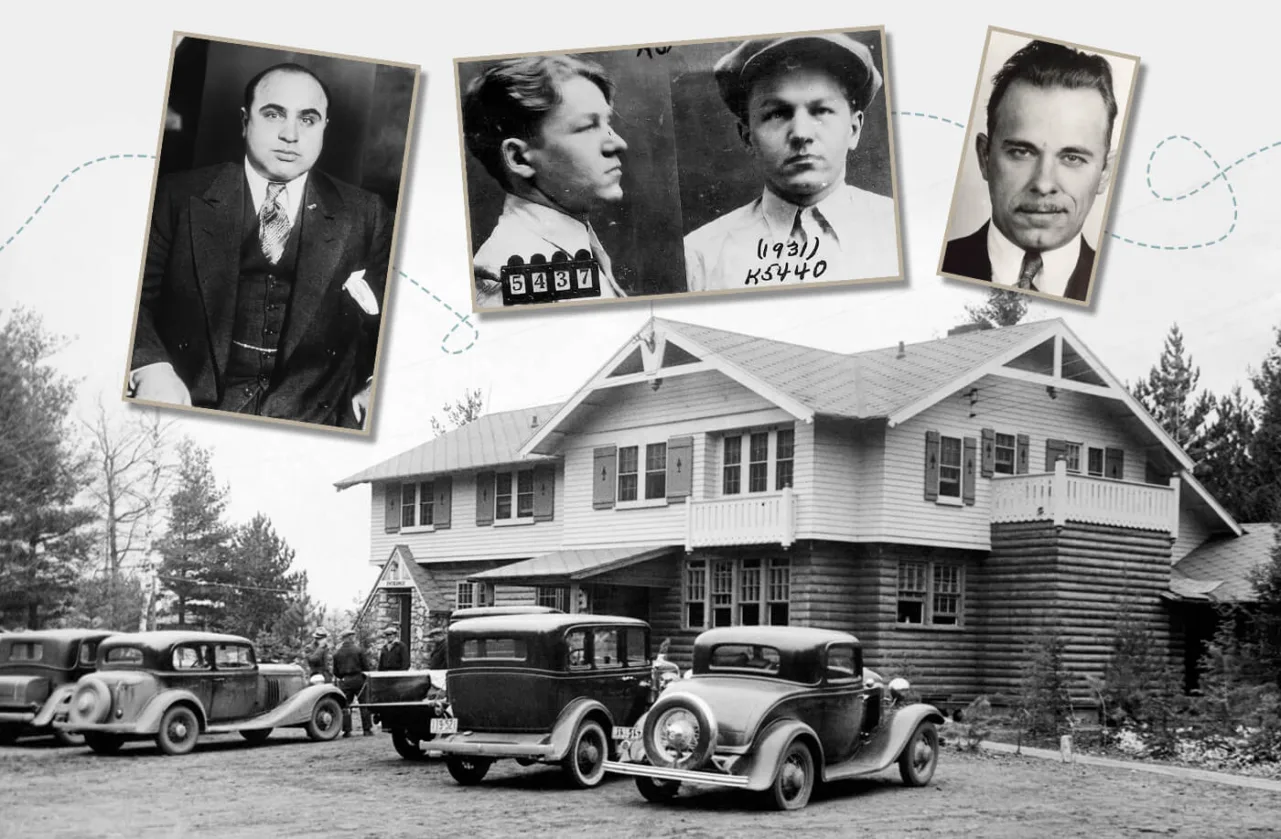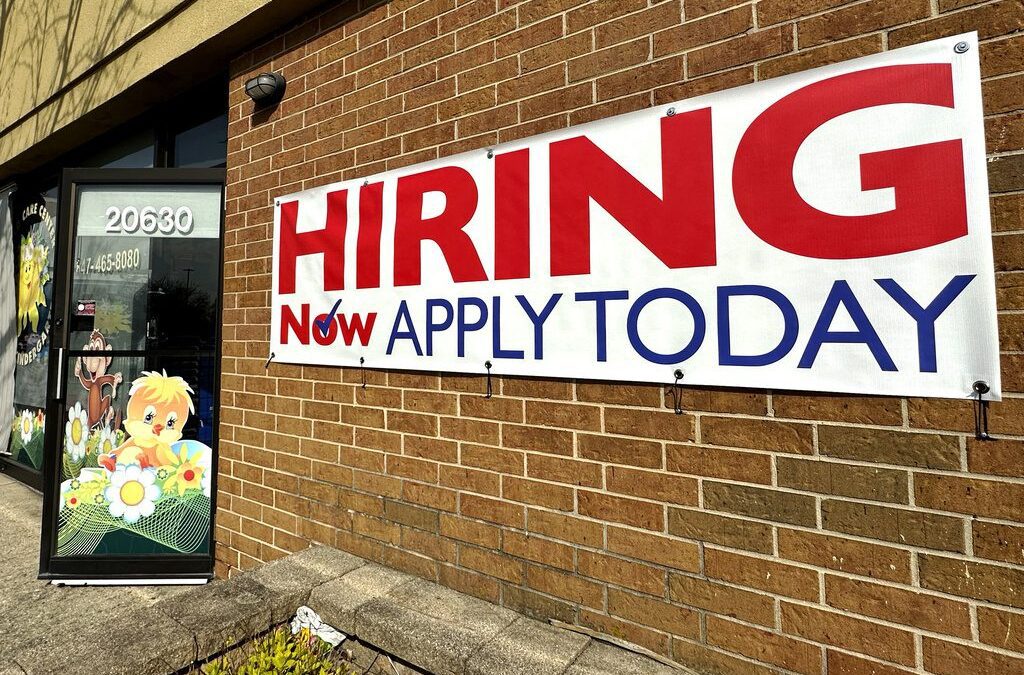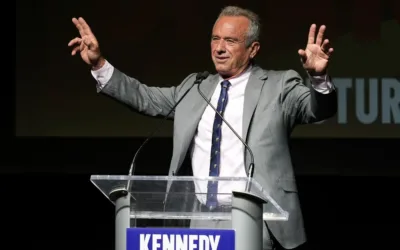
#image_title
Proximity to Chicago made Wisconsin a favorite place to “work” and play among society’s less-savory individuals.
Back during the Roaring ‘20s, the mobsters who ran Chicago had only to look north to Wisconsin to find excellent wooded hideouts that also made great places to stash the booze they were smuggling in from Canada.
Gangster resorts, complete with gambling and brothels, arose during this time. Wisconsin’s small-town banks, with their minimal security, were also ripe targets for robbery.
Chicago Blackie and His Gang Terrorize Shullsburg
In the summer of 1925, an armed gang held Shullsburg, a small southwestern Wisconsin mining town, captive. Criminals led by Chicago Blackie, an alias for bank robber Joe Dawsie, had cut all the phone lines leading to town. The Dubuque Telegraph Herald reported that men wielding sawed-off shotguns “terrorized the townspeople for more than two hours with volleys of buckshot” before blasting the vault of the First National Bank with explosives.
Sacks of non-negotiable bank bonds were dumped in northern Illinois on a road leading back to Chicago.
A jury acquitted Dawsie, but he went to jail for other robberies and boasted that he had blown more than 200 bank safes. The bank failed during the Great Depression, but the vault is part of a restaurant called the Water Street Place Pub & Eatery. A bullet-ridden sign from that day is at the local mining museum.
Jefferson Bank Robbed by Valentine’s Day Massacre Assassin
In November 1929, about nine months after the notorious Saint Valentine’s Day Massacre in Chicago, Fred “Killer” Burke, one of Al Capone’s triggermen, showed up in Jefferson to rob the Farmers and Merchants Bank.
His crew fired shots into the bank furniture after the head cashier tried to set off the alarm. They got off with nearly $400,000 in cash in bank bonds, only $10,000 of it covered by insurance.
Months later, after Burke was captured in Michigan, the bank’s president got a call offering to return most of the cash if the bank wouldn’t press charges. According to the son of bank president Lynn Smith, Smith met the gangsters several times in abandoned school houses and got the bank’s money back.
Capones: Public Enemies No.1 and No.3 in Wisconsin
Al Capone himself was known to enjoy a refuge in the Northwoods of Wisconsin.
For a time, he owned a summer home on Cranberry Lake near Hayward. Legend says it was fortified with a machine gun turret and that Capone used hydroplanes to smuggle whiskey from Canada.
His brother, Ralph Capone, owned a tavern in Mercer called Billy’s Bar, a hotel, and also had slot machines. Ralph Capone, once “Public Enemy No. 3,’’ lived up north for decades and died in 1974 in Hurley.

John Dillinger and Little Bohemia
John Dillinger robbed a bank in Racine in 1933, but spent even more time in the state.
In April 1934, Dillinger needed a place to recover from bullet wounds from an FBI shootout in the Twin Cities. He, Baby Face Nelson, and their gang found refuge at Little Bohemia Lodge, just outside Manitowish Waters.
The FBI closed in, but agents shot innocent customers by mistake, giving Dillinger and Nelson a chance to flee and giving tourists a reason to stop and see the bullet holes ever since. Local lore says Dillinger buried a suitcase stuffed with $200,000 in the woods nearby.
You can also visit Dillman’s Bay Resort in Lac du Flambeau, where Nelson hid out from the FBI.
Other Northwoods hangouts
The notorious bordellos of the Minocqua area, such as Ma Bailey’s, drew Chicago mobsters, including Roger “The Terrible” Touhy, Frank Nitti, hitman Sam “Golf Bag” Hunt, and Jack Zuta. Sam Giancana, who took over from Al Capone, vacationed in the Rhinelander area.
The Jack O’Lantern Lodge, near Eagle River, was owned by Allen Dorfman and the Teamsters. According to local lore, the FBI searched the lake near the lodge after Jimmy Hoffa, a frequent Jack O’Lantern visitor, disappeared in 1975.

Bugs Moran in Lake Geneva
Al Capone’s greatest rival, George “Bugs” Moran, also enjoyed vacationing in Wisconsin.
Bugs and his wife Lucille liked to hide out at the Lake Como Hotel, owned by Hobart Hermansen, the “slot machine king of Lake Geneva.” Eventually, Lucille divorced Bugs and married Hermansen. Baby Face Nelson was also a customer. Today the former speakeasy is the French Country Inn.
Nearby, in the Water’s Edge B&B, guests can enter the “counting room” where gambling profits were tallied and the vaults where the whiskey was stored, and sleep in the Bugs Moran room, which has iron bars on its windows.
Rumor has it that there are still slot machines on the bottom of Lake Como.
Elkhart Lake Gambling Dens
During the Roaring ‘20s, the town was a gambling mecca, with at least four casinos. The train would bring mobsters to town to gamble and gambol.
An undercover reporter from Milwaukee wrote, “Never have games of chance been operated more openly or with less regard for anti-gambling laws.” This ended when the “revenuers” showed up, busting up slot machines and shutting down the gambling halls. Today, an upscale restaurant, The Paddock Club, pays homage to Elkhart Lake’s most notorious gambling joint.

This billionaire’s PAC is spreading a big lie about Tammy Baldwin, Medicare, and taxpayer savings
Restoration PAC, funded by Uline’s Richard Uihlein, twists the significance of forcing Big Pharma to negotiate for lower bulk pricing on Medicare...

New Biden rules deliver automatic cash refunds for canceled flights, ban surprise fees
In the aftermath of a canceled or delayed flight, there’s nothing less appealing than spending hours on the phone waiting to speak with an airline...

Opinion: It’s time for Congress to fight for small businesses instead of big corporations
May is National Small Business Month. Our elected leaders need to show leadership all year long. For the past 27 years I’ve been fortunate to pursue...

Biden makes 4 million more workers eligible for overtime pay
The Biden administration announced a new rule Tuesday to expand overtime pay for around 4 million lower-paid salaried employees nationwide. The...




